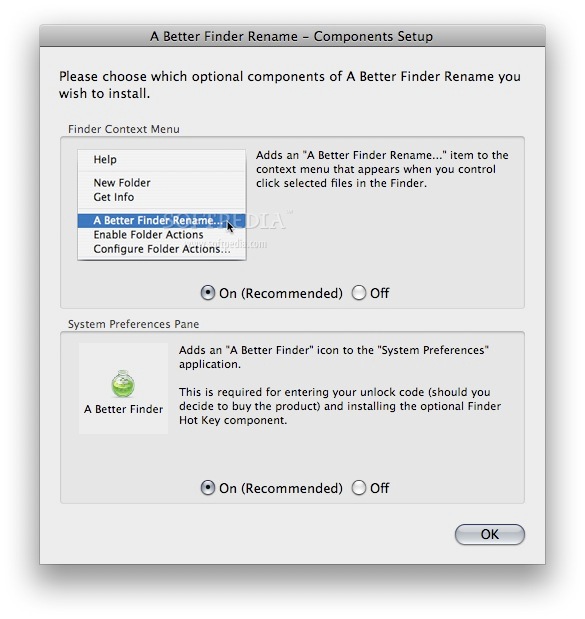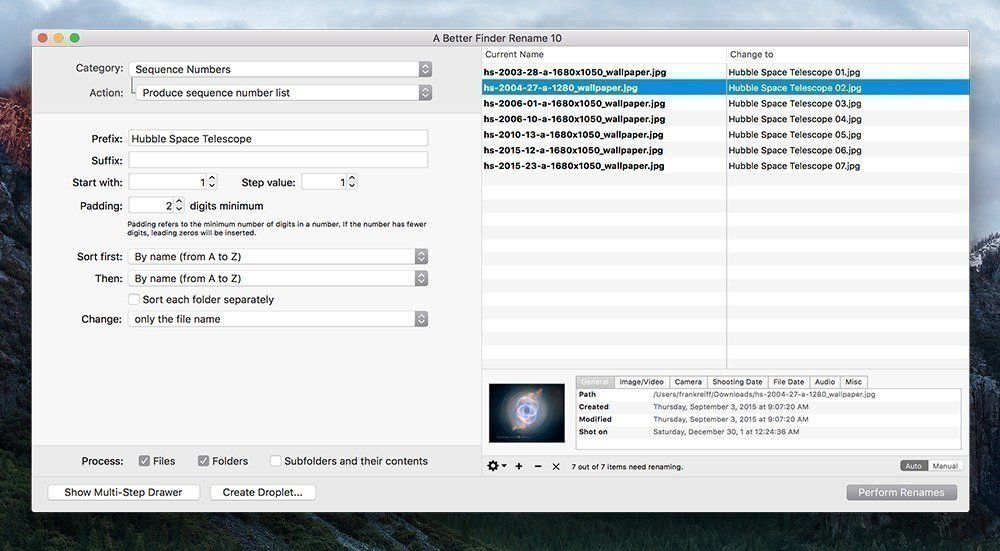
It’s little more complicated than a stream of data, but if I want to save this data to a file it needs to be converted into one. All that matters for now is that the in-memory representation of art is a structured object.

The details of how this is accomplished don’t matter for this post. The list is accompanied by additional metadata that tells R that this particular list is a data frame. Each element of this list is a pointer to another data structure, namely an atomic vector (e.g., numeric vector). R represents this data frame as a list of length 6. This data frame is currently stored in memory on my machine, and it has structure.
#A better finder attributes 5 serial series#
Resolution series sys_id img_id short_name formatġ 1000 watercolour sys02 img34 teacup-ocean jpgĢ 1000 watercolour sys02 img34 teacup-ocean pngģ 2000 watercolour sys02 img34 teacup-ocean jpgĤ 2000 watercolour sys02 img34 teacup-ocean pngĥ 4000 watercolour sys02 img34 teacup-ocean jpgĦ 4000 watercolour sys02 img34 teacup-ocean pngħ 500 watercolour sys02 img34 teacup-ocean jpgĨ 500 watercolour sys02 img34 teacup-ocean pngĩ 8000 watercolour sys02 img34 teacup-ocean jpgġ0 8000 watercolour sys02 img34 teacup-ocean png You really think you are prepared for the dark? That’s adorable. This post is aimed at anyone who is in a similar situation to me! The issue only came up for me when I started reading about Apache Arrow (a topic for another post, perhaps) and realised that I needed to have a better understanding of what all this data serialisation business is about, and how R handles it. In my case, I’ve worked as a mathematical psychologist and computational modeller for about 20 years, and until very recently I’ve never had never had to think about it in any detail. If you’re a social scientist who mostly works with small CSV files, for example, there’s no particular reason why you’d have encountered this. It’s a topic that folks who work with big data or have a computer science background likely understand quite well, but a lot of people who use R come from other backgrounds. Serialisation is one of those terms that comes up from time to time in data science, and it’s popped up so many times on my twitter feed that I feel like I need a better grasp of how serialisation works in R. I’ve decided the time has come for me to do a deep dive into data serialisation in R. It is a tale of fright, a desperate agony, and like any good tragedy it starts with the hope and naive optimism of youth… The traumatic experience of the last week is fading, leaving a pale residue of fear and the few scraps of writing that are the sole surviving documentation of these days. The new version adds links to support material for droplet problems introduced by new macOS 13 Ventura security warnings.I still alive, and that’s what matters.
#A better finder attributes 5 serial update#
Forcing the Finder to update its information about files and folders.Setting or removing legacy creator and type codes.Whether or not file extensions appear in the Finder.Additionally, A Better Finder Attributes 5 gives you control over:.Separate processing for files and folders, batch processing of sub-folders.Automatically deals with file date consistency rules.Select files in the Finder and activate A Better Finder Attributes 5 via the Finder context menu or via a hot key.Drag-and-drop into the file list or onto the application icon.Double click the droplet to edit the stored settings. Drag-and-drop files onto the droplet application to apply the changes stored in it. Total File and Folder Creation and Modification Date Control - A Better Finder Attributes 5 gives you total control over file creation and modification dates, setting them to specific times and dates, adding or removing time or simply removing them altogether.Īutomate with Droplets - A Better Finder Attributes 5 allows you to save frequently used settings to separate "droplet" applications. It combines photo-shooting date and file date changing along with a few unique tricks of its own.Ĭhange EXIF Timestamps at Will - A Better Finder Attributes 5 allows you to manipulate JPEG, CR2, NEF, ARF CRW and CIFF EXIF timestamps at will by setting them to specific times or batch adjusting them by adding and removing time (useful for correcting the timestamps of images taken with a digital camera with a incorrectly set clock and to compensate for timezone changes).Ĭorrect Finder Sorting for JPEG EXIF and RAW Photo - A Better Finder Attributes 5 also allows to synchronize the file creation and modification dates with the shooting dates of JPEG EXIF as well as a wide variety of RAW formats, so that files sort properly in the Finder and other systems.

A Better Finder Attributes is the ultimate file-tweaking tool for macOS.


 0 kommentar(er)
0 kommentar(er)
